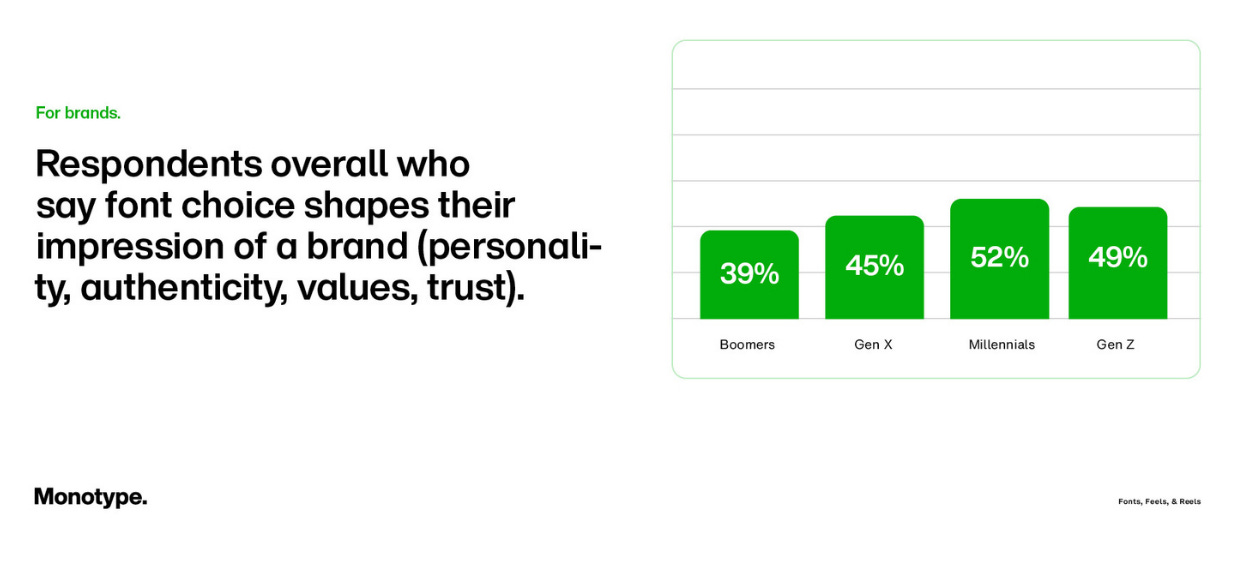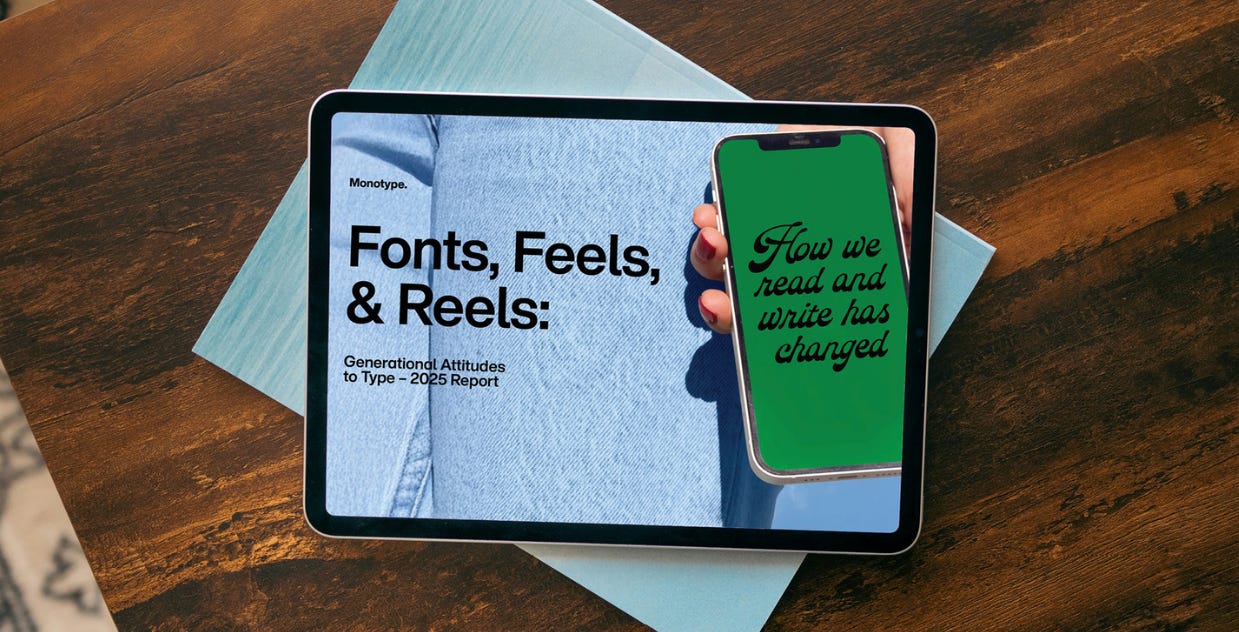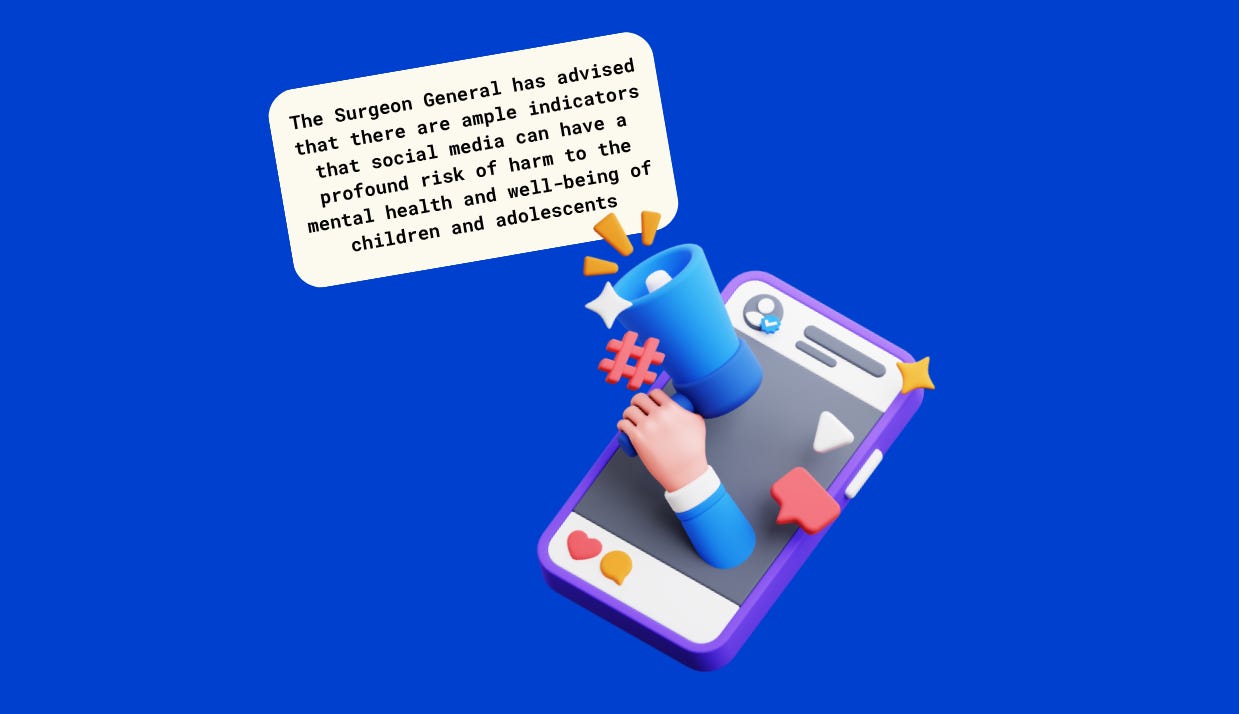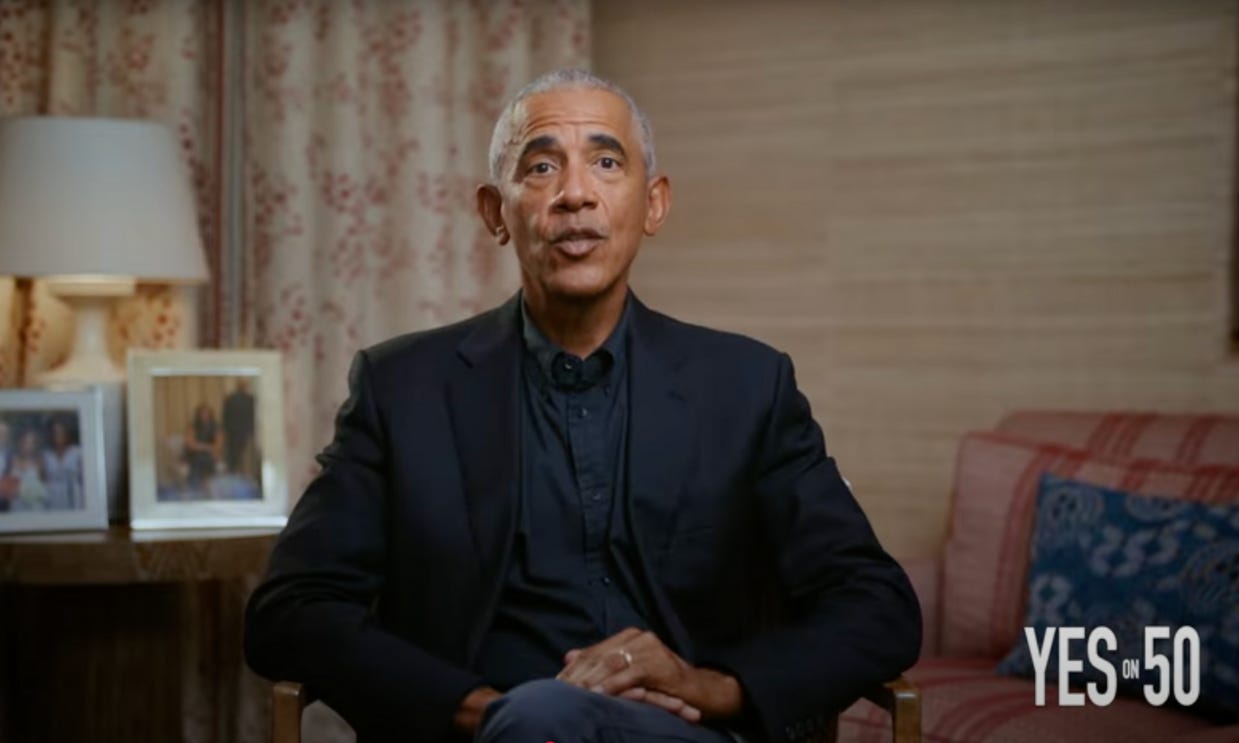Want to speak to the next generation? Use the right fonts.
Plus: Obama is in a new California campaign ad
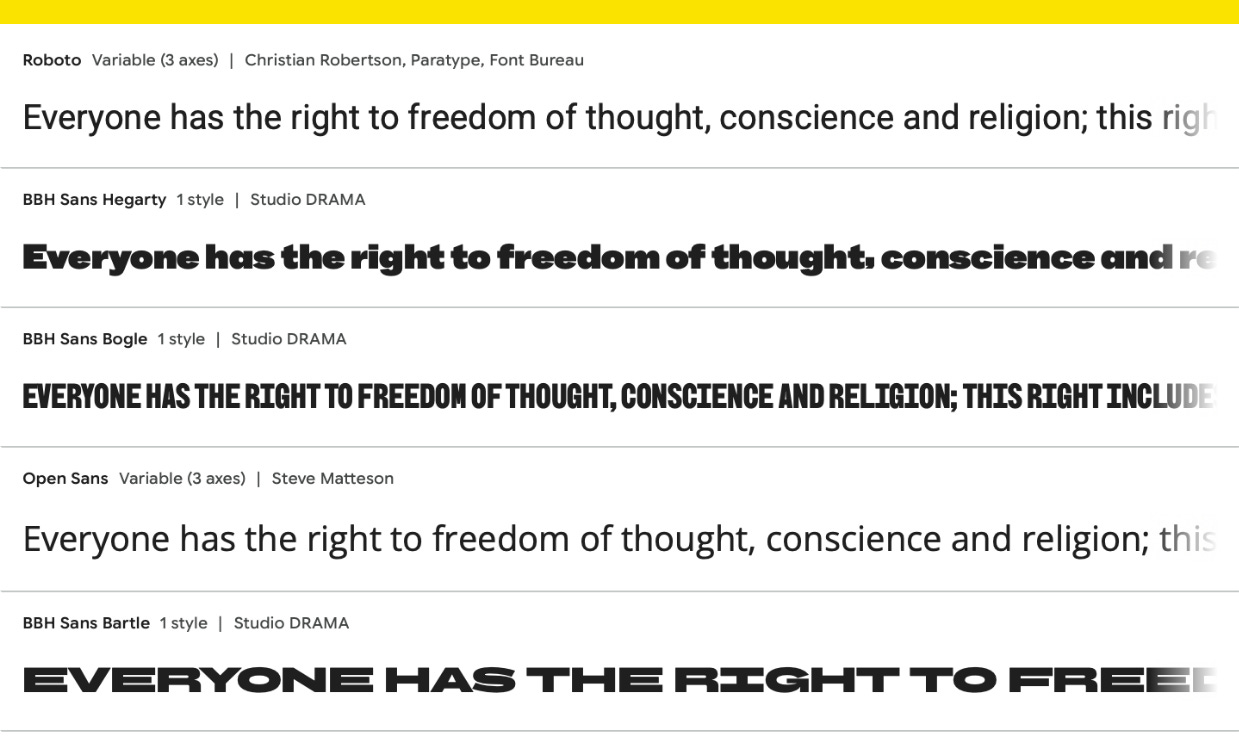
There’s a big generational difference in how people think about font choice.
That’s the takeaway finding from a new report from the type foundry Monotype that asked more than 12,000 social media users around the world ages 16 to 79 about font perception.
“Fonts, Feels, & Reels: Generational Attitudes to Type” found that while just 39% of Baby Boomers say font choice shapes their impression of a brand, that figure is higher for Gen X (45%), Gen Z (49%), and most of all Millennials (52%).
“I didn’t assume that the general public would be that aware of typography,” Monotype executive creative director Tom Foley tells me. “How strongly people feel about type, fonts, which I think has historically been a niche subject, it’s becoming more mainstream.”
That’s especially true when it comes to social media, which Foley says they studied specifically because “that’s where we spend most of our time when it comes to digital reading.” We read best what we read most.
There were similar generational patterns when respondents were asked other questions too, like whether fonts are core to self-expression on social media, with Millennials (67%) and Gen Z (65%) agreeing at higher rates than Gen X (59%) and Boomers (48%).
And the survey — which included respondents from Brazil, France, Germany, Spain, the U.K., and the U.S. — found some of the differences by country can sometimes be boiled down to differences in age. Respondents in Brazil, for example, where the median age is about 35 years old, according to the CIA’s World Factbook, are much judgier about font choices in someone else’s social media posts than Germany, where the median age is approaching 47 years old.
(In the U.S., where the median age is about 39, though, people are even less judgy about someone else’s social media posts because of their font choices than Germany, the survey found, which I’m going to choose to believe is because in a multiracial democracy with the Latin motto for “out of many one,” Americans have an uncommon capacity for cutting each other some slack, even if their fonts suck.)
On social media, Meta has responded to the desire for more fonts by rolling out new custom typefaces last year designed with the type foundry Colophon, and this year they released a font based on Spanish singer Rosalía’s handwriting. But Monotype’s survey suggests that’s not enough. A majority of Millennial and Gen Z respondents said they’re frustrated by the limited font options on their favorite social media apps, and 71% of those who use external design tools to make social media posts said they specifically do it for greater font choice.
Foley says the trend towards strong typography to attract younger generations can be seen outside social media too, especially with fast-moving consumer goods and challenger brands that put typography “more front and center of packaging and branding.”
“There’s definitely a typographic astuteness to it,” he says.
Font choice is important for brands because “type is the thread” that links all its touchpoints, from website to social media to physical assets, Foley says. It helps build consistency and recognition, which are both crucial for any brand.
“Nothing gives consistency like typography can,” he says.
Newsom just signed a social media warning law
The new law, which requires social networks to show users a health warning, is one of several he signed.
California Gov. Gavin Newsom (D) signed a suite of bills into law Monday he says will protect kids online, including an age verification law, stronger penalties for deepfake pornography, and social media warning labels.
The Social Media Warning Law requires social media companies display a black box warning that says in clear, conspicuous, legible black text on a white background: “The Surgeon General has advised that there are ample indicators that social media can have a profound risk of harm to the mental health and well-being of children and adolescents.”
According to the text of the bill, the black box warning is required to appear on screen for at least 90 seconds when logging on, and again after three cumulative active hours of use, and then at least once an hour for every hour after that. “Emerging technology like chatbots and social media can inspire, educate, and connect – but without real guardrails, technology can also exploit, mislead, and endanger our kids,” Newsom said in a statement.
Noem is the new face of an airport shutdown video
Some airports refuse to show it.
In a new video filmed to play at airports during the government shutdown, Homeland Security Secretary Kristi Noem blames Democrats, but some airports refuse to show it. It’s just the latest example of the Trump administration using official government challenges to blame Democrats for the shutdown that’s entering its third week this week.
“Democrats in Congress refuse to fund the federal government, and because of this, many of our operations are impacted and most of our TSA employees are working without pay,” Noem says in the video.
Airports including Phoenix Sky Harbor in Arizona, John F. Kennedy and LaGuardia in New York, and O’Hare and Chicago Midway in Illinois are among those not airing the video. “We did not consent to playing the video in its current form, as we believe the Hatch Act clearly prohibits use of public assets for political purposes and messaging,” Molly Prescott, a spokesperson for the Port of Portland, which operates the Portland International Airport, Hillsboro Airport, and Troutdale Airport, which are not airing the video, told CNN.
Obama is in a new California campaign ad
The former president is stumping for the state’s redistricting proposition.
A Barack Obama campaign ad is back on the air in California. The former president is the latest national Democrat to lend his endorsement to Yes on 50, the state’s ballot measure to gerrymander districts for Democrats instead of sticking to districts drawn by a nonpartisan commission. It’s a response to Texas gerrymandering its districts for Republicans at Trump’s request.
“California, the whole nation is counting on you,” Obama says, speaking straight to camera in the spot. “Republicans want to steal enough seats in Congress to rig the next election and wield unchecked power for two more years.” Yes on 50 is using a mix of spokespeople, including locals like Newsom and Sen. Alex Padilla (D-Calif.), and national Democrats like Sen. Elizabeth Warren of Massachusetts and Rep. Alexandria Ocasio-Cortez of New York, who did one version in English and another in Spanish.
California’s former Gov. Arnold Schwarzenegger (R), who was in office when measures passed in 2008 and 2010 to create the independent Citizens Redistricting Commission, is in ads opposed to the measure. Schwarzenegger admitted to CNN that while Texas was “fixing the election,” “two wrongs don’t make a right. It’s that simple.”
Have you seen this?
Shutdown polls show Democrats’ economic messaging still falling flat. Voters blame Republicans more than Democrats for the federal government shutdown, according to a review of polling conducted after services shuttered. Those same voters, however, delivered the GOP a 4-point advantage when asked which party they trust more on economic issues. [Politico]
White House adds a George Washington statue to the Rose Garden. The bronze statue, which belongs to the National Park Service, was moved from the Washington Monument to its new location during the government shutdown at the specific request of Trump. [NBC News]
Russian state TV launches A.I.-generated news satire show. The show, called “PolitStacker, according to a Google translation, airs every Friday on a television station owned by Russia’s Ministry of Defense. [404 Media]
FLOTUS backchannels with Putin. The First Lady has been working behind the scenes to reunite families torn apart by Russia’s war in Ukraine. And Taylor Swift just broke a bunch of chart records. [Whig by Hunter Schwarz]


